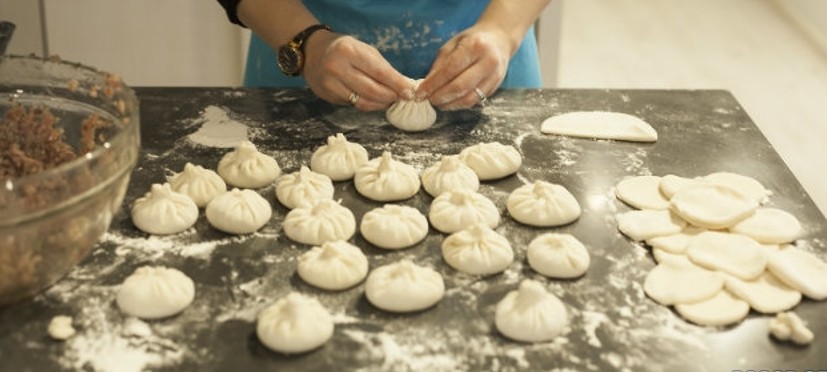Khinkali are a beloved traditional dish from Georgia, widely recognized as a staple of Georgian cuisine. These dumplings feature a savory filling that commonly includes ground meat—such as beef, pork, or lamb—seasoned with various herbs and spices. In some variations, ingredients like mushrooms or cheese may be used to create vegetarian options.
The dough used for khinkali is simple, made from flour, water, and salt, which is rolled out into circles. A generous spoonful of the filling is placed in the center of each circle, and the dough is then carefully pleated and twisted to seal the dumpling, creating a distinctive top knot. The traditional preparation method involves boiling or steaming the dumplings, which results in a tender exterior and a juicy, flavorful interior.
Khinkali are usually served piping hot and enjoyed with black pepper sprinkled on top. The proper way to eat them involves holding the top knot, taking a small bite to sip the savory broth inside, and then consuming the rest of the dumpling. This combination of flavors and textures makes khinkali a favorite among locals and visitors alike, reflecting Georgia’s rich culinary heritage. Whether enjoyed as a street food snack or a hearty meal, khinkali embody the warmth and hospitality of Georgian culture.

The history
The history of khinkali dates back several centuries, with roots deeply embedded in Georgian culinary traditions. While the exact origins are somewhat unclear, it is widely believed that khinkali evolved from ancient dumpling recipes shared across Central Asia and the Caucasus region. These dumplings became particularly popular in the mountainous regions of Georgia, where they served as a hearty meal for laborers and travelers.
In the 19th century, khinkali began to gain broader recognition, particularly in urban centers like Tbilisi, where they were integrated into the national cuisine. The dish reflects the influence of various cultures that have interacted with Georgia over the centuries, including Persian, Turkish, and Russian culinary practices. As a result, variations of khinkali appeared, with different fillings and preparation methods.
Today, khinkali are celebrated as a symbol of Georgian identity, often enjoyed at family gatherings and festive occasions. They represent not only the diverse flavors of Georgian cuisine but also the country’s rich history of hospitality and communal dining. As international interest in Georgian food increases, khinkali have become a popular dish beyond Georgia, showcasing the vibrancy of Georgian culinary heritage.









